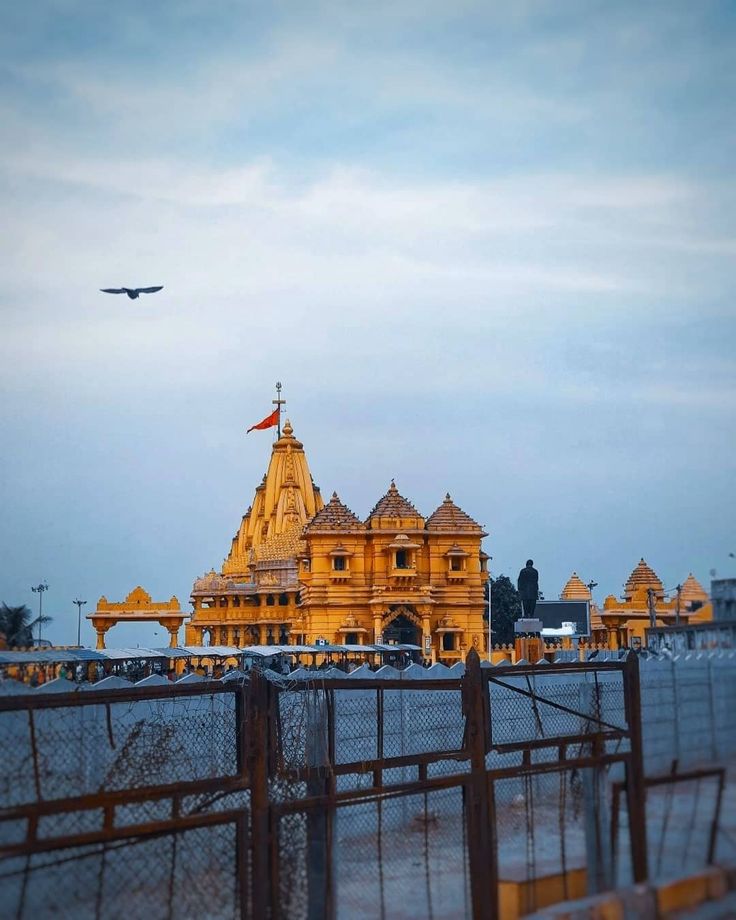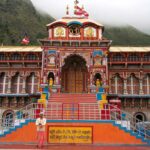Somnath Temple: Discover the Ancient Legacy and Spiritual Power
Introduction
The Somnath Temple, located in the coastal town of Prabhas Patan, Gujarat, is one of the most revered pilgrimage sites in India. Known for its rich history, deep cultural significance, and spiritual power, Somnath holds a special place in the hearts of millions of devotees. As one of the twelve Jyotirlingas (sacred abodes of Lord Shiva), Somnath is not just a temple but a symbol of resilience, devotion, and the unwavering spirit of India. This article delves into the history, importance, and daily life impacts associated with Somnath Temple, shedding light on its enduring significance.
1. History of Somnath Temple
The history of the Somnath Temple stretches back to ancient times. It is believed to have been built originally by the Moon God (Som), who was cursed and sought redemption by constructing this magnificent temple. The legend goes that Lord Shiva, who is worshipped here in the form of a Jyotirlinga, granted the Moon God’s wish, thus establishing the temple.
The temple has undergone several reconstructions and restorations over the centuries, having been destroyed and rebuilt multiple times due to invasions by foreign rulers. Mahmud of Ghazni, a notorious invader, famously attacked and looted the temple in 1025 AD, an event that became one of the most significant chapters in Indian history. Despite such repeated destructions, the temple was rebuilt time and again, standing as a testament to the perseverance of the Indian spirit.
The current structure of the temple was reconstructed in 1951 under the leadership of Sardar Vallabhbhai Patel and the contributions of several philanthropists and devotees.
2. Spiritual and Religious Significance of Somnath
Somnath Temple is an embodiment of devotion to Lord Shiva, the destroyer in the Hindu trinity (Trimurti). It is one of the 12 Jyotirlingas, which are considered to be the most powerful shrines dedicated to Lord Shiva. According to Hindu mythology, it is believed that worshipping Lord Shiva in the form of the Jyotirlinga helps devotees attain liberation (moksha) from the cycle of life and death.
For Hindus, Somnath Temple is a spiritual destination that offers divine blessings, protection, and peace of mind. It is also a place where people come to seek forgiveness, strength, and solace during times of personal struggle or hardship.
3. Daily Life and Observances at Somnath Temple
The daily routine at Somnath Temple is centered around deep reverence and devotion. The temple opens early in the morning, and the first ritual is the Mangala Aarti—a devotional song sung to awaken Lord Shiva. The temple follows a strict schedule of prayers, aartis, and pujas throughout the day.
The Shiva Linga is bathed daily with milk, water, honey, and other offerings, while devotees chant mantras to invoke the blessings of Lord Shiva. The evening aarti, held at sunset, is particularly captivating, as the temple stands bathed in the golden glow of the setting sun, accompanied by the ringing of bells and the chanting of hymns.
During special occasions such as Mahashivaratri, the temple witnesses grand celebrations and attracts a massive influx of devotees. During these festivals, the temple becomes a hub of activity, with devotees offering prayers, seeking blessings, and performing rituals throughout the day and night.
4. Impact of Somnath Temple on Daily Life
Visiting Somnath Temple can have a profound impact on a person’s life. Many devotees report feeling a sense of peace and fulfillment upon visiting the temple, often attributing their sense of well-being to the divine presence of Lord Shiva. The temple is not only a place of spiritual worship but also a source of personal growth, healing, and reflection.
The daily activities at Somnath Temple emphasize spiritual practice, and visitors often feel a sense of renewal and strength from their experiences. For those facing personal challenges or emotional turmoil, Somnath provides an opportunity to seek solace, reconnect with inner peace, and experience a divine transformation.
5. Importance of Somnath Temple to Society
Somnath Temple holds significant cultural and societal value beyond its spiritual importance. As one of the oldest temples in India, it has witnessed the history and evolution of the country, especially in relation to its rich architectural heritage. The temple is a symbol of resilience, having been rebuilt after invasions, looting, and destruction. This resilience is mirrored in the collective spirit of the Indian people.
The temple also plays an important role in tourism and economic development. Thousands of pilgrims and tourists from around the world visit Somnath every year, contributing to the local economy and promoting the region’s cultural heritage. Furthermore, the temple serves as a hub of learning, as it often hosts events, seminars, and spiritual retreats that contribute to the spiritual and cultural discourse of the nation.
6. Significance of Somnath Temple for Devotees
For the millions who visit Somnath, it holds a special place in their hearts. Many devotees consider a pilgrimage to Somnath as a life-changing experience. The temple is known for fulfilling the wishes of its devotees, and it is a place where people come to ask for blessings—whether it’s for prosperity, happiness, or spiritual awakening.
The prasad offered at the temple is considered sacred, and many devotees carry back home the sanctified offerings as a symbol of divine blessings. Moreover, people believe that a visit to Somnath is a pathway to gaining spiritual knowledge, seeking inner peace, and experiencing divine joy.
7. FAQs about Somnath Temple
- What is the best time to visit Somnath Temple?
The best time to visit is during the cooler months, between October and March, when the weather is more comfortable for sightseeing and prayers. The Mahashivaratri festival, celebrated in February or March, is an especially auspicious time to visit. - How do I reach Somnath Temple?
Somnath Temple is easily accessible by road, rail, and air. The nearest airport is Diu Airport, about 60 km away, while the nearest railway station is Somnath Railway Station, just 2 km from the temple. Several buses and taxis are available for travel within the region. - Is there accommodation near Somnath Temple?
Yes, there are numerous hotels and guesthouses near Somnath Temple offering comfortable lodging for pilgrims and tourists. The temple complex itself offers basic accommodations for devotees. - What are the timings for Somnath Temple?
Somnath Temple is open for visitors from 6 AM to 9 PM every day. The temple conducts several aartis during the day, with the most important being the evening aarti. - Can non-Hindus visit Somnath Temple?
Yes, Somnath Temple is open to all, regardless of their religion. It welcomes visitors from all faiths, encouraging them to experience the rich cultural and spiritual traditions of India.
Conclusion
The Somnath Temple is not just a historical monument; it is a sacred sanctuary that connects devotees to the divine. Its significance stretches far beyond its physical structure, representing a symbol of strength, resilience, and spiritual dedication. Whether it is for peace, blessings, or spiritual awakening, Somnath Temple continues to be a timeless symbol of divine energy, offering solace and inspiration to all who visit.










